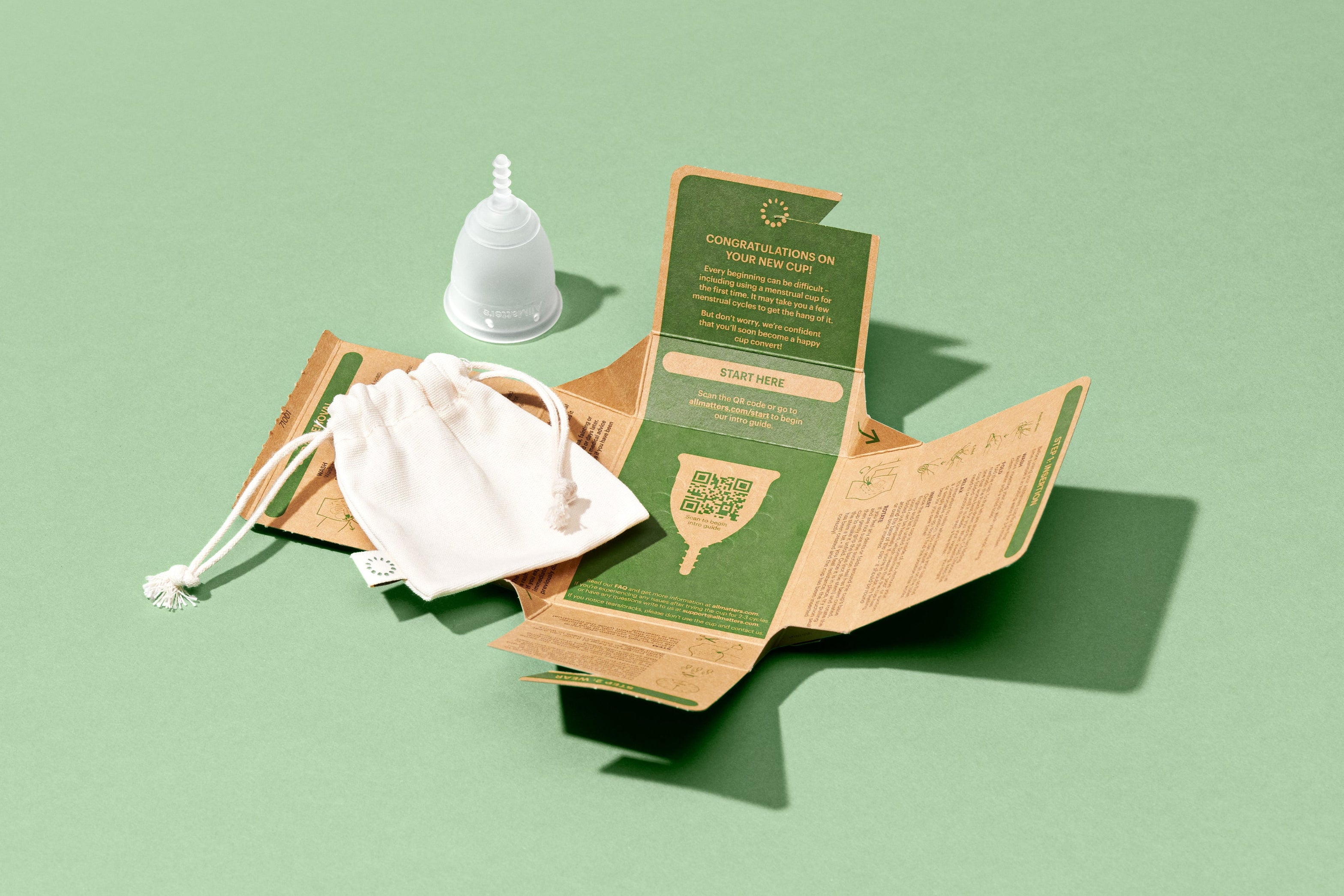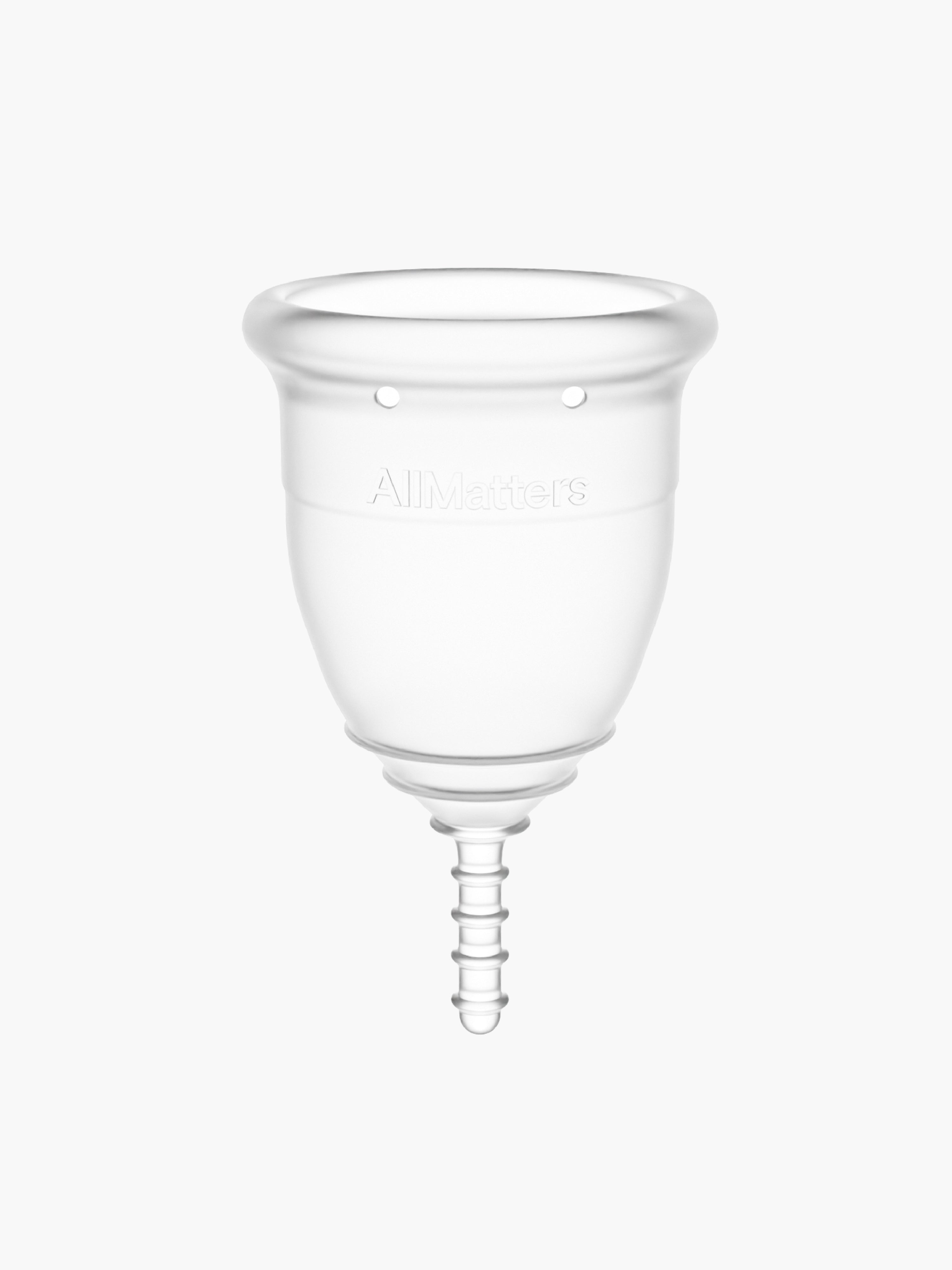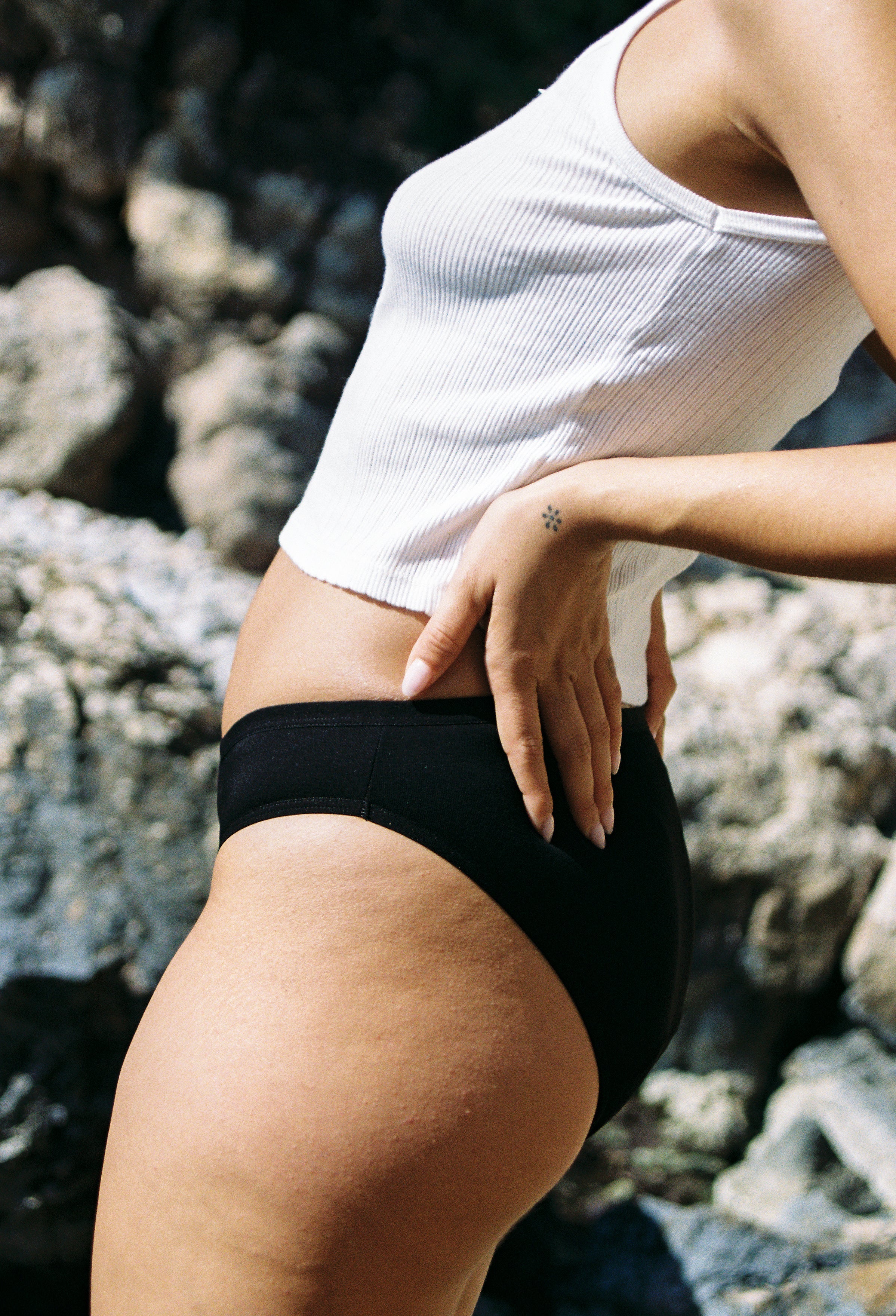Cup Safety and Hygiene
Your safety is our #1 priority. That’s why we have taken several steps to make sure we provide you with a high quality and safe product.
Choosing the right period product can be easier with our guide on menstrual cups vs tampons and pads, plus tips on how to go swimming on your period.
For the best care, make sure to follow our advice on cleaning and maintaining your menstrual cup.
If you follow our instructions on how to use and clean, the cup is a very hygienic and safe method of managing your period.
Before First Use
Before using your AllMatters cup for the very first time, you have to boil it in a pot with water for 3-5 minutes.
Menstrual Cup Information
Cup Material
Cup Material
The AllMatters menstrual cup is made of 100% flexible medical-grade silicone. Medical-grade silicone contains silicon, oxygen, carbon and hydrogen atoms. It doesn’t contain any known unnecessary or hazardous chemicals. Medical-grade silicone is tested for biocompatibility and completely safe to use inside the body.
While the menstrual cup is not organic in the agricultural sense, the cup is developed based on sustainable principles by not containing any hazardous chemicals, toxins or artificial colourings.
The AllMatters cup is AllergyCertified and registered with The Vegan Society. The storage bag is made from unbleached organic cotton, the packaging is made from recycled carton, and user instructions have been printed directly on the packaging to prevent additional waste. The raw material derives from sand (quartz), the second most abundant mineral in the Earth’s crust.
The AllMatters menstrual cup is made from medical-grade silicone and manufactured in Germany.
Is it made of plastic? There is no clear definition of plastics and it’s defined very widely. The definition covers 3 categories:
• Thermoplastic (Thermoplast) which is used for bags, bottles and packaging.
• Thermoset (Duroplast) which covers all materials that cannot be melted.
• Elastomer (Elastomer), which covers rubbers and silicones. This is the category OrganiCup’s material fall under.
If you want to dive into the chemistry, the base for plastic is carbon whereas the base material for silicone is silicon. Plastic is an example of a man made material. It is made when you combine carbon with oxygen or sulfur (natural materials) and put those materials through chemical processes and heat. This chemical process is what makes plastic man made.
Allergens
Allergens
The AllMatters cup is AllergyCertified. When you choose products that carry the AllergyCertified label, you can rest assured that their team of toxicologists have gone through every single ingredient in the product, made a risk assessment and concluded that the product lives up to their strict quality requirements and that there is a minimal risk of developing allergies or irritations due to usage.
Vegan
Vegan
The AllMatters cup is registered with The Vegan Society. This means that the organisation’s team has checked our products against their criteria and made sure they meet their standards of being cruelty-free and using no animal by-products.
Infections + Hygiene
Infections + Hygiene
Using a menstrual cup is very hygienic, as no external factors or free oxygen reach the accumulated flow while it is inserted.
In fact, you’re more likely to get an infection from bacteria on your hands that was transferred via the menstrual cup than you are to get an infection from the menstrual cup itself. That’s also why it's very important to make sure to wash your hands with soap before you insert or remove the cup.
We have consulted gynaecologists on this matter and because bacteria formation grows exponentially, you should empty your menstrual cup every 8-12 hours. That’s why it is important to keep track of when you inserted it and to follow hygiene recommendations.
In 2019, a report by the Lancet Public Health also concluded that menstrual cups are a safe option. Read the report here.
Toxic Shock Syndrome (TSS)
Toxic Shock Syndrome (TSS)
Using a menstrual cup is very hygienic, as no external factors or free oxygen reach the accumulated flow while it is inserted.
In fact, you’re more likely to get an infection from bacteria on your hands that was transferred via the menstrual cup than you are to get an infection from the menstrual cup itself. That’s also why it's very important to make sure to wash your hands with soap before you insert or remove the cup.
We have consulted gynaecologists on this matter and because bacteria formation grows exponentially, you should empty your menstrual cup every 8-12 hours. That’s why it is important to keep track of when you inserted it and to follow hygiene recommendations.
In 2019, a report by the Lancet Public Health also concluded that menstrual cups are a safe option. Read the report here.
Cleaning
Cleaning
The AllMatters menstrual cup can last for years with proper cleaning and care.
You should always make sure to wash your hands with soap and water when handling your menstrual cup.
Before first use
Before using your AllMatters cup for the very first time, you have to boil your menstrual cup in water for 3-5 minutes. Please make sure to keep an eye on the pot so the water doesn’t vaporise and the cup doesn't fall to the bottom and burn.
Can I sanitise my menstrual cup in a microwave or pour boiling water over it?
We recommend that you boil it in a pot because it's important to make sure the water reaches 100 degrees Celsius and kills any bacteria. This is more difficult to control if you’re using a microwave or pouring boiling water over the cup, since the water's temperature drops quickly.
During your period
While on your period, we recommend that you empty the cup in the toilet or sink and simply rinse it with clean water and reinsert it. It’s not necessary to use soap to clean your cup, but if you prefer using soap, it’s important to use a perfume free and pH-balanced soap, such as our cup wash.
After your period
Once your period has finished, you have to boil your cup in water for 3-5 minutes. Again, please make sure to keep an eye on it so it doesn’t accidentally burn. If you are not able to boil your cup, you can sanitise it using a sanitising wipe.
After your cup has dried, store it in its organic cotton bag. If needed, you can wash the cotton bag in the washing machine, on 30 degrees Celsius. If you have lost the bag, you can use any other cotton bag.
Tips + Tricks
Tips + Tricks
Using a cup with an IUD
We have consulted a gynecologist on the matter and as the cup is placed low at the base of the vaginal canal, it shouldn’t interfere with an IUD. However, you should always make sure to release the suction seal when you’re removing the cup. Learn more in our blog post about using the cup with an IUD.
As with any other gynecological concern, we’d always recommend you talk with your gynecologist before you start using a cup with an IUD.
Discoloration
Discoloration of your cup is normal and happens due to residual build-up. However, it's possible to make it look "as new" again with the following steps:
• Buy some hydrogen peroxide 2% either online or in your local pharmacy/drugstore
• In a bowl, mix 1/2 water and 1/2 hydrogen peroxide. Submerge the cup and leave it overnight in the mixture.
• This should make your cup appear almost as new. Just remember to clean it thoroughly before use!
Smell
Medical-grade silicone (the cup's material) is odorless. However, it's possible that your cup develops an odor with use. The most common reason for this is that you leave it in for longer than the advised 8-12 hours.
Here are a few ways to eliminate the cup’s smell:
• Soaking it in a hydrogen peroxide mix. Mix 1/2 hydrogen peroxide 2% and 1/2 water in a bowl. Submerge the cup and leave it overnight in the mixture. Just remember to boil the cup for 3-5 minutes before you use it again!
• Using fresh lemon juice. You can either wipe the inside and outside of your cup with it or soaking your cup in the juice for around an hour. Once finished, boil your cup for a few minutes in water to ensure all residue is removed.
• Rinsing the cup with cold water. After removing and emptying your menstrual cup, make sure to rinse it with cold water first. You can use lukewarm after if preferred. Using warm water first may cause the smell.
OrganiCup Menstrual Cup
OrganiCup Menstrual Cup
Discover the AllMatters Menstrual Cup, previously known as OrganiCup, voted “Best Menstrual Cup of 2024” by Reviewed.com. Our award-winning cup offers a sustainable, efficient and healthier alternative to pads and tampons. Made from 100% medical-grade silicone, it provides ease of use, supreme comfort and leak-free period protection.
All orders come with a 100% Satisfaction Guarantee, so if you’re not satisfied, we’ll refund you, no questions asked.
- Wear for 12 hours, rinse and re-insert.
- 3 Million satisfied users worldwide.
- Last for years, saving money and reducing waste.
- Can be worn while swimming, running and dancing.













